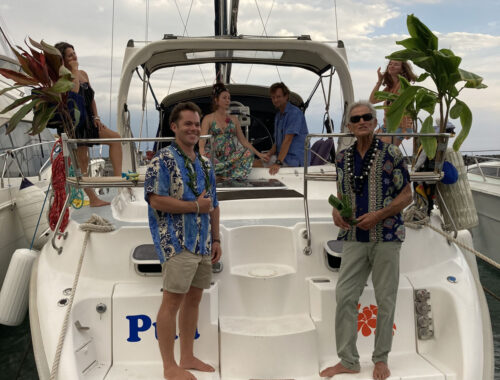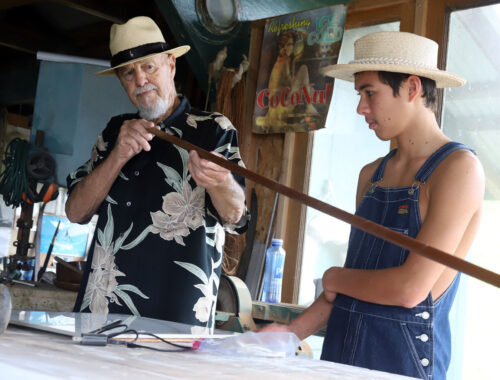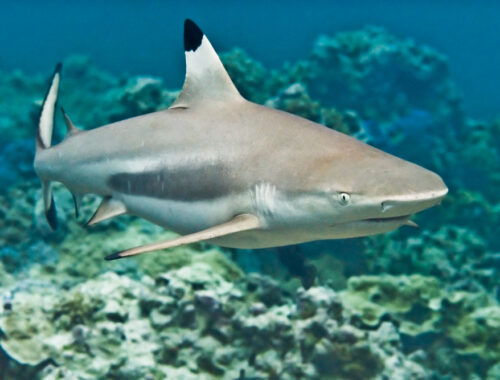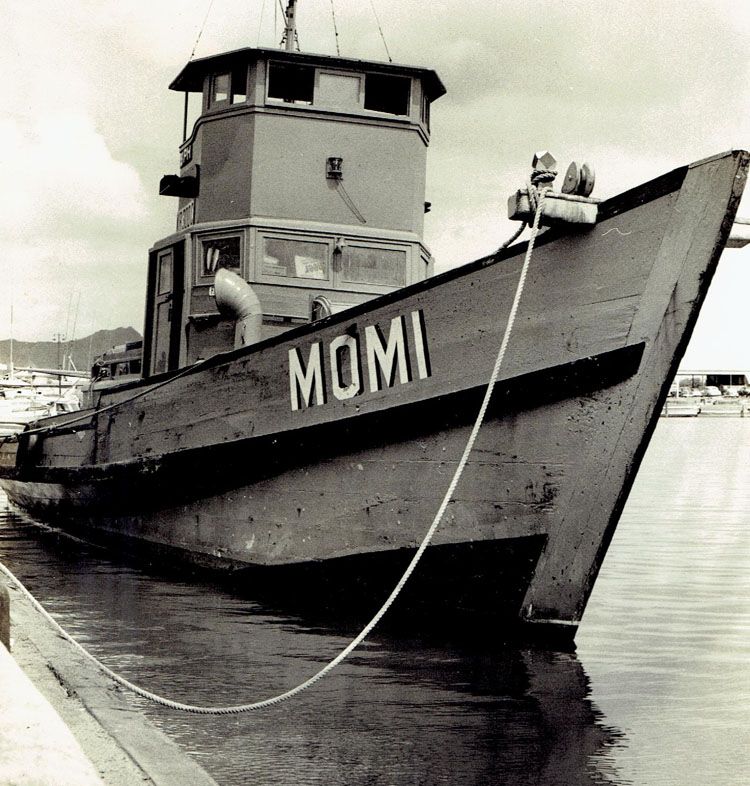
Sampans, Mahai‘ula Bay, and the Big Bang
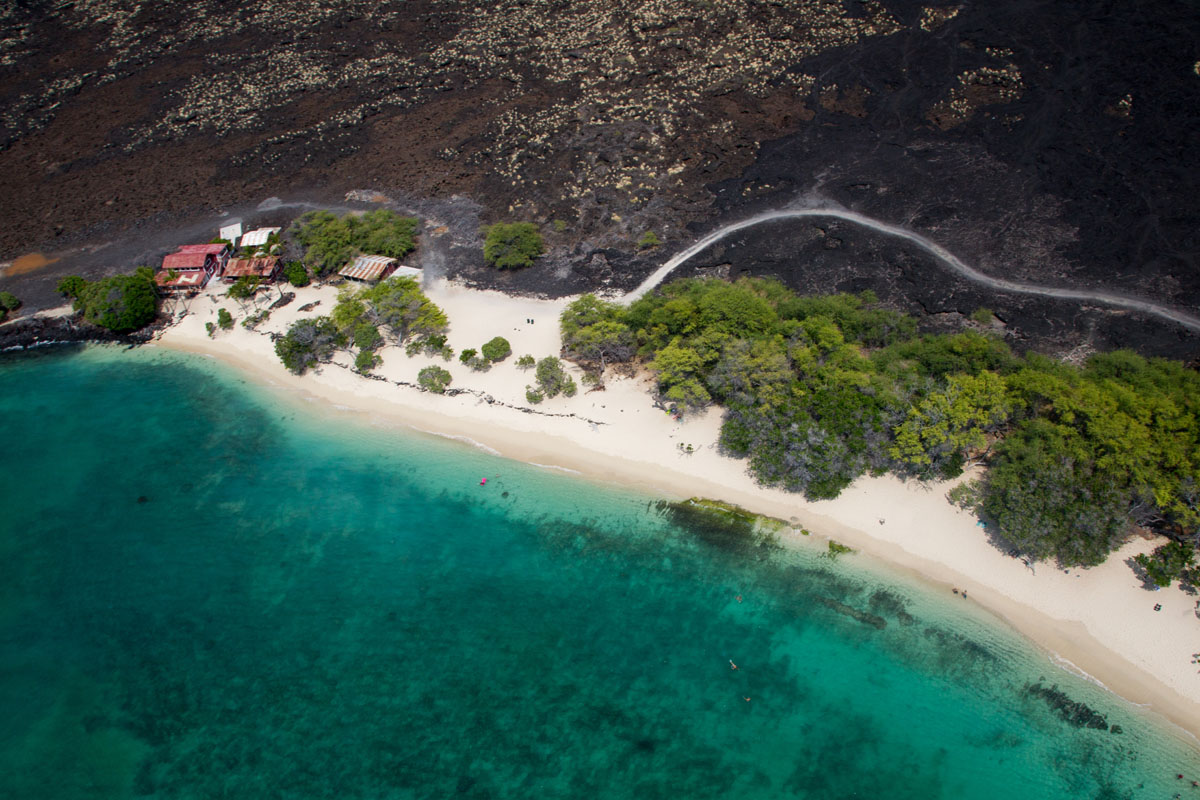
By Pete Hendricks
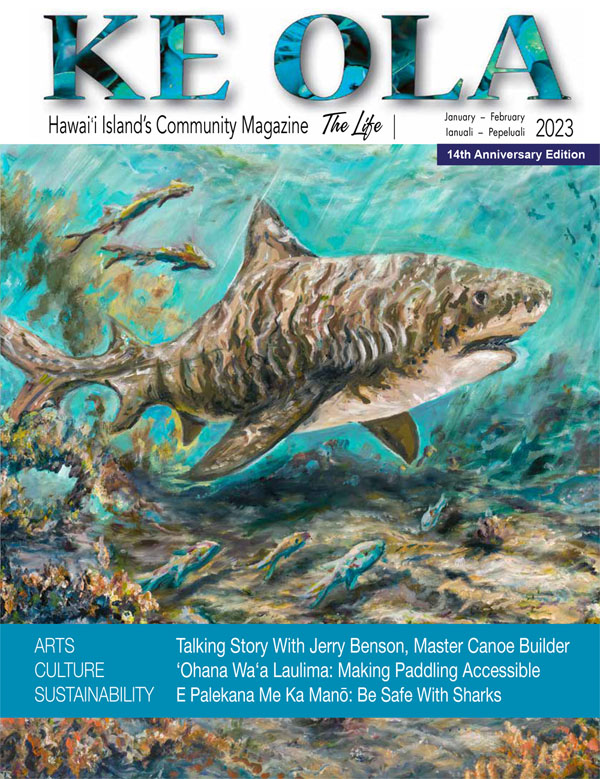
I was enjoying a pleasant morning one day back in 1996, snorkeling at Mahai‘ula Bay (now known as Kekaha Kai State Park) in North Kona. Just off one of the lava fingers of the reef, I spotted what looked like an old metal rack on the shallow ocean floor. A closer look made me hesitate. The rack contained five drums, which looked like miniature oil barrels, with a hole in the center on each end. From my US Navy service, I recognized what might be a depth charge rack with charges included. They were partly covered with sand, coral, and algae. There was also a large engine block nearby, as well as what looked like a tank, maybe used for fuel. After my swim, I noticed some large, desiccated timbers and some smaller wooden debris above the high tide and debris lines. This widespread scattering of objects was intriguing.
After a bit of research, I found out that a US Navy patrol vessel had wrecked on Mahai‘ula reef in January 1943. It turned out that the YP-183, as it was named by the Navy, had been used locally as a sampan. These boats were originally Chinese fishing boats—distinctive-looking, relatively flat-bottomed, wooden boats, that sometimes have a small shelter on board.
Numerous sampans had been taken over by the US Navy shortly before and after the 1941 Pearl Harbor attack and were converted into patrol vessels. I shot some pictures of the YP-183 wreck with an underwater camera—just a cheap disposable camera in a plastic case. I became really curious. Could I have found a weapon used against enemy submarines?

In 1997, crew from the University of Hawai‘i at Hilo Marine Option Program were able to make a field trip to the site, accurately locating and mapping what was confirmed to be the remains of YP-183.
Then, thanks to a friend at US Army Pōhakuloa Training Area (PTA), we made contact with the Navy Explosive Ordnance Disposal unit (EOD) at Pearl Harbor, O‘ahu; the State Parks Preservation office; the State Conservation and Resource Enforcement office; and the University of Hawai‘i at Mānoa Marine Option Program (MOP). Soon we were all working together to research what was lying beneath Mahai‘ula Bay. Plans were made to assess and remove the materials, which were eventually identified as a gravity-fed depth charge rack with five charges, which looked like miniature 55-gallon fuel drums. Several of the depth charges had rusted through; however, there were still approximately 1,200 pounds of explosives on site. Apparently I had discovered something significant and potentially dangerous!
On a Wednesday morning in 2002, while the beach park was closed, the EOD team arrived with a 2.5-ton military 6×6 truck and a Humvee. Also, just offshore, a 25-foot Mako fishing vessel was standing by, thanks to the State Conservation and Resource Enforcement Division (DOCARE). The wrecked depth charges were raised by lift bags (strong inflatable vinyl balloons) tied to the charges and filled using air from SCUBA diving tanks. The charges were then towed ashore and dragged up and onto the beach. The husky EOD team then wrestled the charges up into the truck.
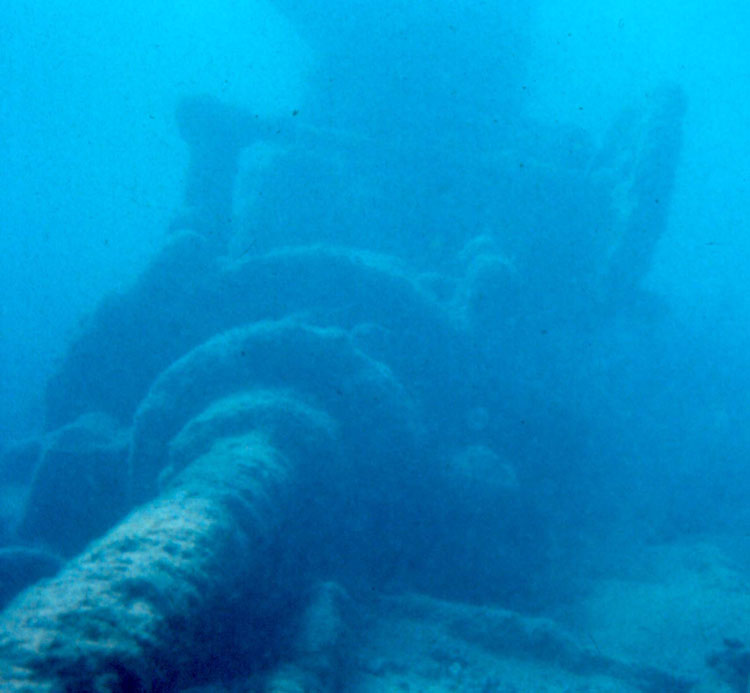
The Navy chief in charge said to me with a smile, “Pete, if you see a puff of smoke in a little while up toward Saddle Road, that was us.” I was not able to join the team for the drive up to PTA for the “big bang.” But my friend at PTA, who witnessed the explosion from all the charges exploding together, said the blast was “pretty impressive.” Meanwhile, down at Mahai‘ula Bay, hundreds of people had been swimming and snorkeling over that cache of explosives since World War II!
Today at lowest tide and calm weather, you can just make out from shore the engine of YP-183, which was likely destroyed after grounding in a winter storm. It was formerly a classic Hawaiian commercial fishing sampan, 71 feet long, built by Seichi Funai, a well-known boatbuilder of the 1930s in Hawai‘i. Several large hull timbers of the sampan, now far up behind the beach, were likely deposited by the destructive tsunami of 1946.
The original Japanese sampan, a 34-foot sail powered fishing vessel, was brought to Hawai‘i on a freighter in 1899 by shipwright and boat builder Gorokichi Nakasugi. The word sampan comes from the Chinese san-3, pan-board, which originally meant a small skiff-like vessel.

Gasoline, and then diesel engines were soon added to the growing Hawai‘i fleet. Modifications to similar vessels built in Hawai‘i eventually resulted in 450 or so unique boats in the fishing fleet before World War II. The distinctive Hawaiian sampans—with their high, sharp bows and side sponsons (a projection that extends outward from the hull)—traveled among the islands and eventually several hundred miles offshore on multi-day trips, chasing aku (skipjack tuna) and ahi (yellowfin tuna). Much larger catches of tuna by the sampan fleet stimulated the growth of fish canneries in Hawai‘i.
World War II (after Pearl Harbor) almost eliminated the largely local Japanese ownership of the sampan fleet, and wartime conditions severely restricted offshore fishing. An Army general was acting governor, personal rights were restricted, and martial law persisted until 1944.
After the war, the sampan fleet never regained its dominance in the industry. By the time Hawai‘i became a state in 1959, few big sampans fished in the traditional style with live bait, a spray of water over the stern to excite the fish school, and a barefoot crew with bamboo poles and artificial lures pulling in the tuna from the excited school behind the boat. By 1971, only 15 large sampans were fishing. The advent of long line fishing around the islands by 1990, with vessels setting thousands of baited hooks, helped industrialize the Hawaiian fishing business.
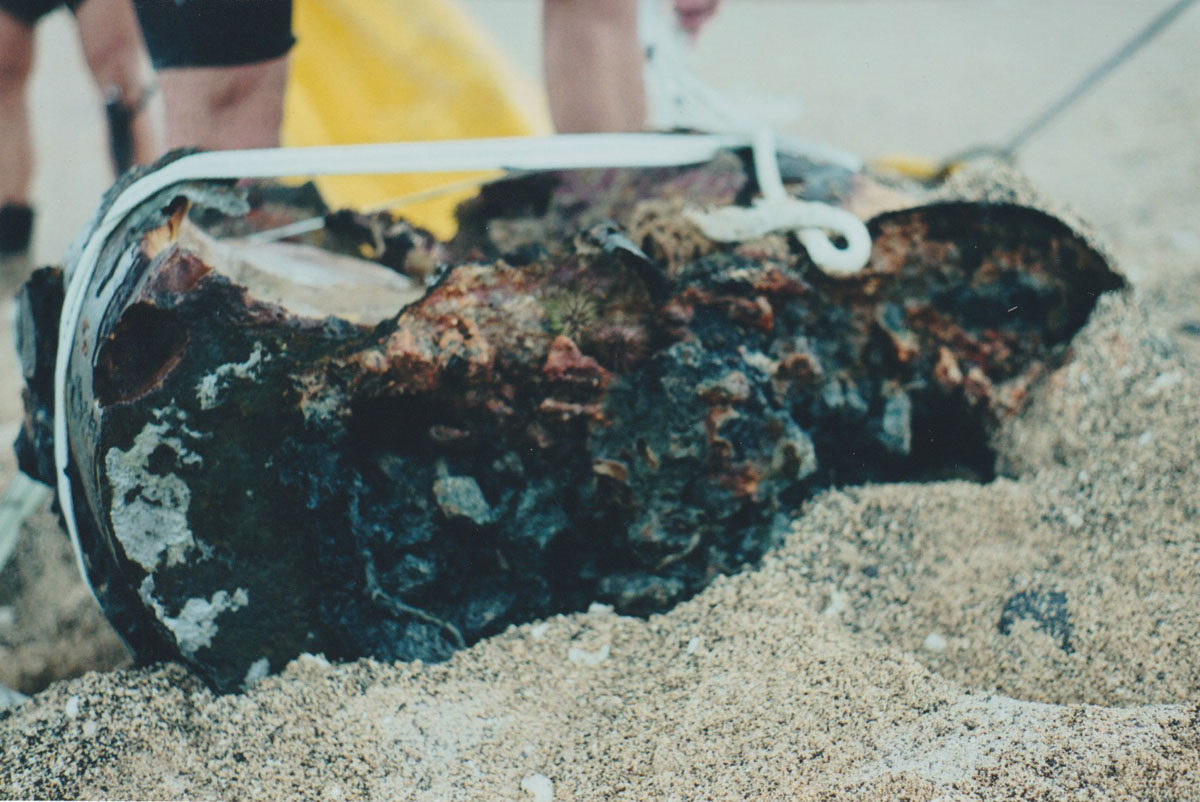
Modern Sampans
A local survivor of the sampan fleet is the “haole sampan,” a modified version of the traditional Japanese design, and now considered a Hawaiian vessel. An example is the Mona H, a wooden fishing craft used for many years out of Kailua-Kona by Captain George Parker. Another fiberglass sampan out of Hilo is Sea Tractor. Local sampans originally crafted of wood are now popped out of fiberglass molds and completed by a new generation of technicians; however, many of our local modern fishing boats retain features of the traditional sampan, with its high bow and fine entry. They enable Hawaiian artisanal commercial and recreational fishing in local waters and support local markets and retail sales. ❖
References:
Sea of Opportunity, The Japanese Pioneers of the Fishing Industry in Hawaii, Manako Ogawa, UH Press, 2015
A New Use for an Old Idea: A Small Multi-purpose Hawaiian Style Fishing Boat for Developing Fisheries in Island Areas, Robert T. B. Iverson, NMFS, NOAA, Honolulu 1975
For more information: Pete Hendricks, oldsaltp@yahoo.com
